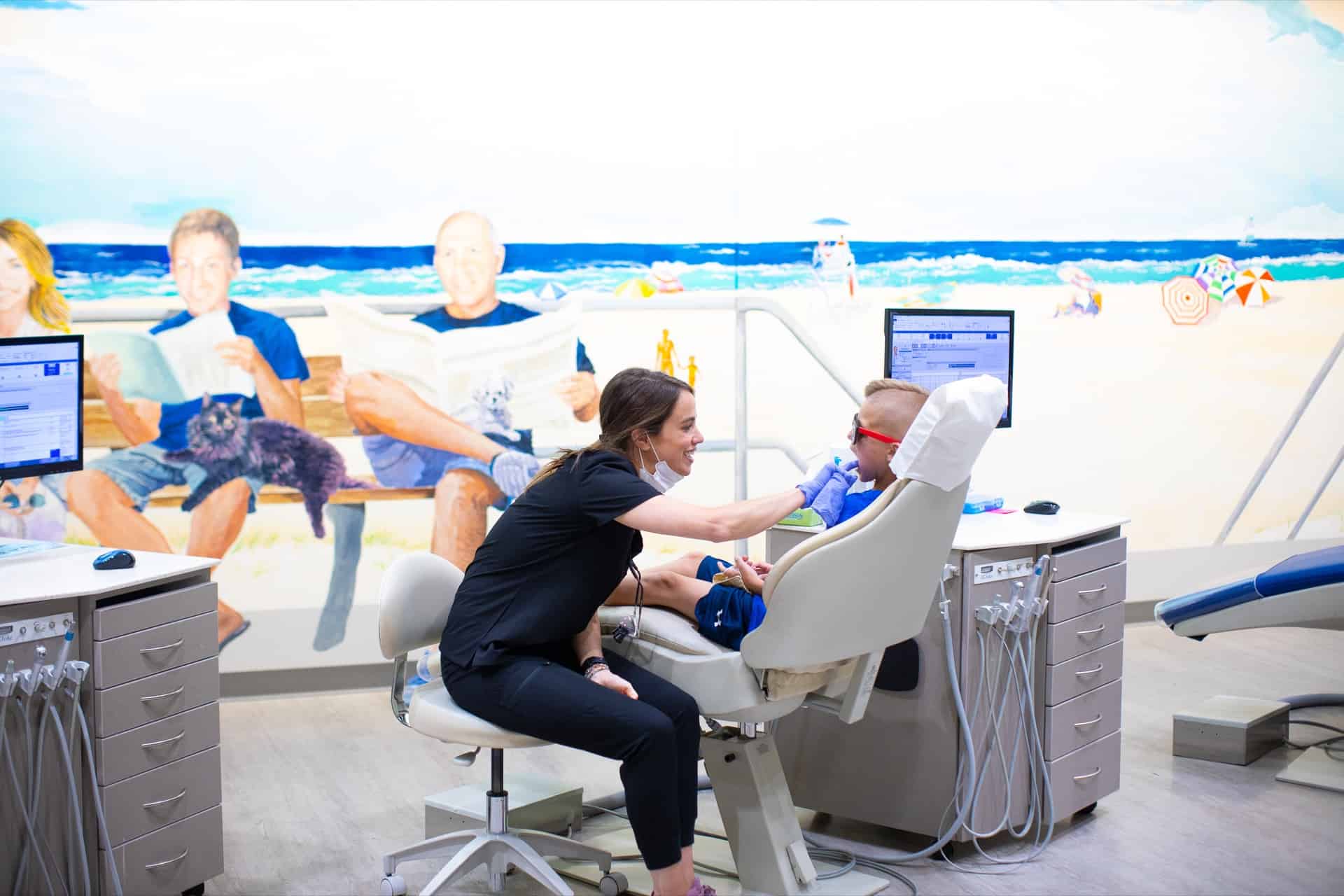Orthodontic treatment is easier to undertake on children than on adults because their mouths are still developing. This is especially true for children with narrow or undersized palates — better known as the roof of your mouth. A narrow palate can cause tooth overcrowding, crossbite, and even breathing problems. It’s something that you should address as soon as possible. A palate expander can fix the problem. This device allows palatal expansion without surgery and can help your child eat, speak and breathe easier.
Appel Orthodontics knows all about palate expanders. We can customize one to your child’s mouth and expand their palate to make it easier to treat orthodontic problems later.
What Is a Palate Expander?
A palate expander is a device that uses wires to put pressure on the back teeth and pushes them outward, widening the roof of the mouth and the area around it. The most common type is the nonsurgical Hyrex Rapid Palate Expander that attaches to the two back molars and sits against the inside of the back teeth. A small joint in the center of the palate expander appliance pushes the wires against the teeth. A small key is inserted into the joint and twisted once a day to push the wires out a little further, which forces the back teeth out.
It sounds a bit scary, doesn’t it? Don’t worry! It’s a safe, effective method for expanding your child’s palate.
There are three main types of palate expanders:
- Rapid Palate Expander (RPE) is used mainly in young patients with unfused palates to widen the jaw quickly. The Hyrax Expander is the most common type of RPE and doesn’t require any surgical procedure to install.
- Maxillary Skeletal Expansion (MSE): The MSE Expander is used mostly as a palate expander for adults and is placed in the mouth using a local anesthetic. It’s held there by four temporary implants in the palate. In addition to orthodontic issues, it’s used to help adult patients increase their airway space, curing sleep apnea, fatigue, sleeping issues, and breathing problems.
- Surgically-Assisted Rapid Palate Expansion (SARPE): This version requires surgery and is used only in the most severe adult patients.
Is a Palate Expander Painful?
The first few days after the device is placed in your child’s mouth, your child may feel some discomfort. But that usually goes away rather quickly. After that, there shouldn’t be any pain with the daily expansion.
If your child continues to feel discomfort after a week or so, give Appel Orthodontics a call. We can schedule an appointment to take a look.
How Does a Palate Expander Work?
So how does a palate expander appliance work? The palate is made up of two bones in the maxillary or upper jaw. Those bones meet in the center of the palate, but they don’t actually fuse together until a child’s middle teen years. That means it’s easy to move the bones apart when the child is younger. The palate expander does this by applying pressure to either side of the jaw. The steady pressure slowly pries the palate open.
Now, we know what you might be thinking. Does this mean my child will have a gaping hole in the top of their mouth? The answer is no. The tough palate tissue covering the bone expands with the palate, and eventually, the bone fills in the gap. This extra bone keeps the teeth pushed out and widens the palate. As your child hits middle-teen years, that bone fuses and sets the palate permanently.
How Long Will My Child Wear a Palate Expander?
A palate expander will likely do the job within three months or so, but the bone then needs to “set,” or harden. Otherwise, as soon as the appliance is removed, the palate will go right back to its original width. So the appliance stays in the mouth for another 3-6 months, on average, so the jaw can harden. In total, you can expect your child to wear a palate expander for 6-9 months.
In some cases, the appliance can stay in longer, depending on the amount the jaw needs to expand. We will be able to determine the length of time before we install the appliance in your child’s mouth.






